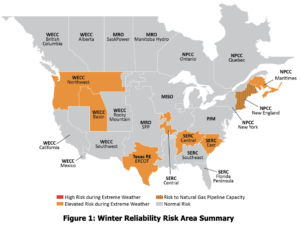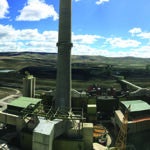Westminster, CO (Dec. 1, 2020) — Tri-State Generation and Transmission Association would more than double its currently contracted solar and wind resources by 2030, add energy storage, and reduce emissions to help meet the needs of its member electric cooperatives and public power districts, in the “preferred scenario” of its Electric Resource Plan (ERP) filed today with the Colorado Public Utilities Commission (CPUC).
Tri-State’s preferred scenario includes 1,850 megawatts (MW) of additional renewable generation, more than 200 MW of energy storage, and the retirement of its remaining Colorado coal units. The CPUC will consider and act on the filing, and that process will continue into 2021.
“Our Electric Resource Plan filing demonstrates how Tri-State and our members can continue our cooperative’s historic transformation to clean energy, while keeping power reliable, reducing our wholesale rates, and helping Colorado meet its greenhouse gas emissions reduction goals,” said Duane Highley, Tri- State CEO. “We look forward to engaging with the Colorado Public Utilities Commission and all parties in the regulatory approval process.”
Tri-State was joined by Colorado Gov. Jared Polis on Nov. 12 to announce that its preferred scenario will reduce greenhouse gas emissions associated with its wholesale electricity sales in Colorado by 80% by 2030, when compared to a 2005 baseline. The cooperative’s filing supports its broader transition, which also includes a goal to reduce rates and provide more contract flexibility for its members.
Tri-State noted that its ERP will be revised over time, as the cooperative implements partial requirements contract options with its members, and in response to market, technology and regulatory changes, which may influence resource needs over the next ten years.
“Our preferred scenario identifies potential resource options, including battery storage and natural gas generation, but we do not have to commit to a path at this time,” Highley said. “There will be time for emerging technologies to become competitive before we have to make acquisition decisions.”
Tri-State also noted its continuing efforts with other regional power providers to evaluate the expansion of the Southwest Power Pool’s regional transmission organization (RTO) into the West.
“To achieve the high levels of renewable integration in our Electric Resource Plan filing, it will be necessary for Tri-State to participate in an RTO in the West,” Highley said. “In addition to the benefits a fully organized market brings in integrating increasing amounts of new renewables on a real-time and day ahead basis, it also includes regional transmission planning and cost allocation that could provide for much needed, new regional transmission infrastructure, which is key to the siting and development of new renewables.”
In addition, Tri-State has set a goal to reduce its wholesale rates by 8% by the end of 2023 and has submitted its partial requirements membership option to the Federal Energy Regulatory Commission for approval to create increased flexibility for members to self-supply power.








